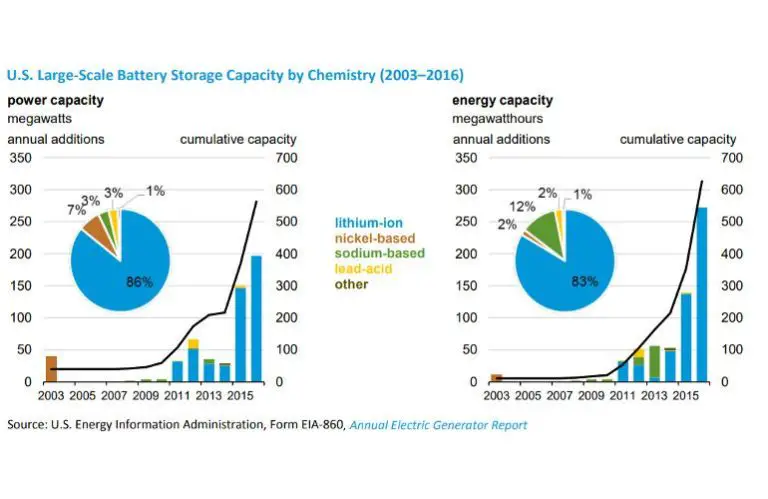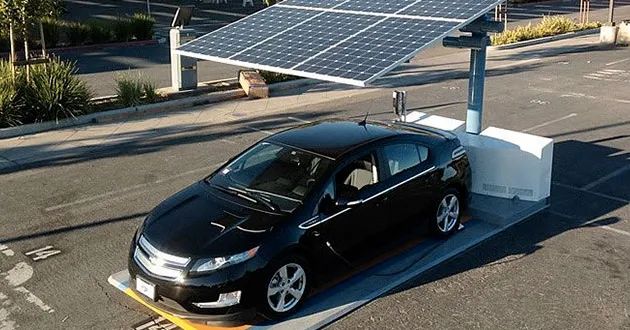What Is Solar Impact On The Environment?

Solar energy refers to the radiant light and heat from the sun, which is produced in the nuclear fusion reactions in the sun’s core. Solar energy represents renewable and sustainable energy since sunshine is constantly produced by the sun. In recent years, growing concerns about the environmental impacts of fossil fuels, along with declining costs of solar technology, have led to rapid growth in the adoption of solar energy around the world. The solar energy market is increasing at over 20% annually, with over 100 gigawatts of solar capacity installed globally in 2018 alone [1]. Solar energy offers benefits of reducing greenhouse gas emissions, improving air quality, conserving water, and preventing habitat loss. This article provides an overview of the major environmental impacts, both positive and negative, of the increasing use of solar energy globally.
[1] International Energy Agency (2019). Solar PV. https://www.iea.org/reports/solar-pv
Reducing Greenhouse Gas Emissions
Solar energy is beneficial for the environment because it reduces greenhouse gas emissions that contribute to climate change. Burning fossil fuels like coal, oil, and natural gas for electricity production releases carbon dioxide, methane, and other greenhouse gases. These emissions are dangerously accelerating global warming and climate change impacts across the planet.
According to Energy5, generating electricity from solar offsets fossil fuel use which significantly reduces overall emissions. Every kilowatt of electricity produced by solar directly replaces a kilowatt from the fossil fuel power grid. Solar photovoltaics require no combustion and generate electricity with zero direct emissions. Replacing dirty fossil fuel energy sources with clean, renewable solar energy is essential for effective climate change mitigation.
Studies show solar power can prevent hundreds of millions of tons of CO2 emissions annually. Widespread solar adoption is critical for transitioning away from a fossil fuel-based energy system and toward a zero-carbon electricity grid powered by renewables. Solar energy serves as a catalyst to curb emissions and meet global climate goals.
Improving Air Quality
Solar energy improves air quality by displacing fossil fuels like coal, oil, and natural gas, which produce harmful air pollutants when burned for electricity generation. According to The Green Advantage Solar Energy for Climate Change Mitigation, transitioning to solar energy reduces emissions of major air pollutants like sulfur dioxide, nitrogen oxides, particulate matter, carbon monoxide, and mercury. These pollutants contribute to smog, acid rain, and respiratory illnesses. Solar power avoids generating these pollutants entirely.
The Clean Energy for a Sustainable Future report also highlights how solar improves air quality. Every kilowatt-hour of solar electricity displaces emissions from fossil fuel plants. This leads to cleaner outdoor and indoor air. Poor air quality causes millions of premature deaths globally each year. Widespread solar adoption can prevent many of these deaths by providing zero-emissions electricity.
According to Why Switch to Solar Energy: The Environmental Benefits, solar is a completely clean and natural energy source. Using solar power does not add any air pollution whatsoever. This makes it ideal for improving air quality, especially in cities and communities currently burdened by fossil fuel pollution.
Conserving Water
Solar photovoltaic (PV) systems help conserve water compared to conventional fossil fuel power plants. Fossil fuel plants require significant amounts of water for cooling and steam generation during electricity production. For example, coal and nuclear plants withdraw billions of gallons of water per day from nearby rivers, lakes or oceans for cooling. Natural gas plants also utilize water for steam production and cooling.
In contrast, PV panels do not require water to generate electricity from sunlight. This makes solar a very water-efficient way to produce energy. According to the Solar Energy Industries Association, PV systems save around 80-90 billion gallons of water per year in the United States, compared to an equivalent amount of electricity from fossil fuels [1]. As water shortages intensify in parts of the world, the water conservation benefits of solar become increasingly valuable.
Preventing Habitat Loss
Generating solar energy in existing built-up areas prevents the need to clear new land for power plants and transmission lines. Solar panels can be installed on rooftops or in other previously developed areas without impacting natural habitats or ecosystems. According to the Legislative Hearing Committee on Natural Resources (https://www.govinfo.gov/content/pkg/CHRG-111hhrg57230/pdf/CHRG-111hhrg57230.pdf), the use of solar energy helps protect wildlife habitats and sensitive lands by reducing the demand for new energy infrastructure that would require land clearing.
In regions like South Asia, climate change and energy demands are putting pressure on natural areas, as reported by UCA News (https://www.ucanews.com/news/climate-fears-force-big-changes-on-small-south-asian-farms/73172). Solar energy allows these countries to generate power without further habitat loss. Focusing solar installations on rooftops, parking lots, and city centers preserves forests, wetlands, and agricultural areas. Overall, solar energy’s ability to utilize existing infrastructure reduces the environmental impact compared to other energy sources that require new facilities and transmission corridors.
Recycling Solar Equipment
At the end of their roughly 30 year lifespan, solar panels need to be recycled properly. Solar panels contain valuable materials like silicon, silver, copper and aluminum that can be recovered and reused (1). However, they also contain some toxic materials like lead that require special handling to avoid polluting the environment.
Some key regulations around solar panel recycling include the WEEE Directive in Europe and National Electrical Manufacturers Association (NEMA) guidelines in North America. These regulations require producers of solar panels to finance their end-of-life collection and recycling (2).
The main steps in recycling solar panels involve dismantling, shredding, separating out various materials, and finally processing those materials. First, the aluminum frame, junction box, cables, and any silicone sealant are removed. Next, the panel is shredded into smaller pieces. Then specialized separation techniques are used to process the glass, plastics and metals. For example, trommels, shakers and density separators are used to sort the materials efficiently. The recovered silicon can be used to make new solar panels.
While some regions like the EU have mandated producer responsibility, broader recycling infrastructure is still being developed in many areas. Some key challenges include collecting widely dispersed panels and handling the variety of panel technologies. However, there is ongoing progress to build comprehensive solar panel recycling systems.
(1) https://www.epa.gov/hw/solar-panel-recycling
(2) https://eridirect.com/sustainability/products-we-recycle/solar-panels/
Challenges and Limitations
While solar energy has many benefits, it also comes with some challenges and limitations. One of the main issues with solar power is its intermittent nature due to reliance on sunlight. Solar panels do not produce energy at night, and energy output varies depending on weather and seasons (https://www.fuergy.com/blog/the-challenges-of-solar-energy). This creates the need for energy storage solutions to supply power when the sun is not shining.
The duck curve, which shows the timing imbalance between peak solar energy generation and peak energy demand, also poses grid management challenges. There can be overgeneration of solar power during midday when energy demand is lower, and ramping up other sources quickly enough to meet evening peak demands can be difficult (https://wattlogic.com/blog/what-are-the-disadvantages-of-solar-energy/).
Solar energy has high upfront costs, and the amount of suitable land required for utility-scale solar farms can be challenging to acquire. There are also limitations around optimal locations for solar power based on latitude and regional climate patterns. Maintaining and replacing solar equipment over decades of operation requires long-term planning and investment.
Emerging Innovations
Significant advances in solar technology are leading to new applications and improvements in efficiency and affordability. Some key innovations include:
Perovskite solar cells, which are made of inexpensive materials and are easier to manufacture than traditional silicon cells. Perovskite cells have achieved efficiencies over 25% in lab tests, rivaling silicon cells. However, durability issues must be overcome before widespread commercial use.1
Solar tracking systems that follow the sun’s path to maximize energy capture throughout the day. Dual-axis trackers can boost energy production by 20-30% compared to fixed panels.2
Thin-film solar cells made by depositing photovoltaic material in thin layers onto substrates like glass or plastic. Thin-film cells are lightweight and flexible, allowing new applications like building-integrated solar. Efficiency is lower than silicon cells, but costs are competitive.1
Organic photovoltaics using carbon-based materials like plastics and inks. These cells can be made through inexpensive printing processes. Applications include solar textiles and new lightweight portable solar products.2
Continued innovation will enhance solar’s benefits and expand its versatility as a renewable energy source.
Solar Energy Policies
Government policies at the federal, state and local levels play an important role in supporting solar energy adoption in the United States. Key solar policies include investment tax credits, net metering, renewable portfolio standards and permitting requirements.
The federal government provides an investment tax credit (ITC) that allows businesses and homeowners to deduct 26% of the cost of installing a solar energy system from their taxes. This tax credit has helped drive growth in solar installations across the country (Sistine Solar, 2023). Many states also offer additional tax credits and rebates for solar panel systems.
Net metering policies allow solar panel owners to sell excess electricity back to the grid and receive credit on their utility bills. This helps make solar power more cost-effective. As of 2022, 40 states had mandatory net metering policies in place (Arka360, 2023).
Renewable portfolio standards require utilities to source a certain percentage of their electricity from renewable sources like solar. Thirty states currently have renewable portfolio standards, creating guaranteed demand for solar power generation (ACE, 2022).
Conclusion
Solar energy has demonstrated significant promise for reducing the environmental impact of energy production. The research shows that increased adoption of solar can substantially cut greenhouse gas emissions from fossil fuels, leading to cleaner air and water conservation. Solar power generation at utility scales avoids habitat loss that can occur from damming rivers for hydroelectricity or mining for coal and natural gas. Recycling programs for solar panels are also expanding to handle end-of-life equipment in an eco-friendly manner.
However, there are still challenges to scaling up solar sufficiently to reach climate change goals. Emerging innovations in solar cell efficiency, energy storage, and smart grid technology can help address these obstacles. Government policies that incentivize renewable energy development and make the economics more favorable for consumers also play an important role. With the right technical advances and policy support, solar energy can move from a bit player to a leading source of clean, sustainable power around the world.







